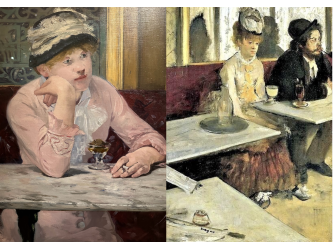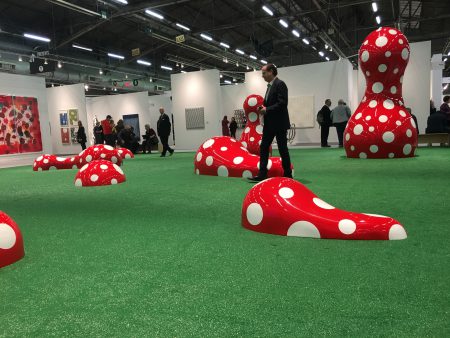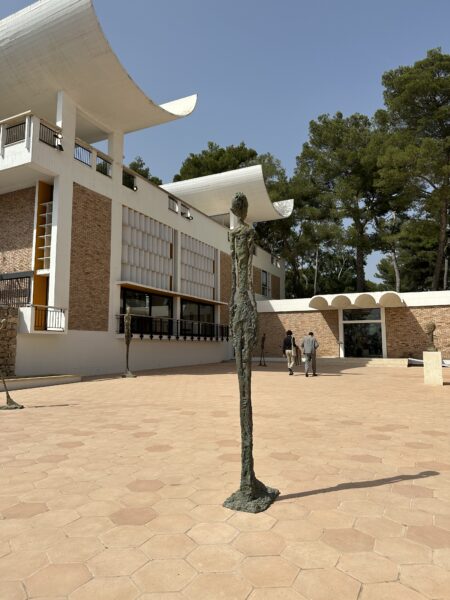
Fondation Maeght
Aimé Maeght and his wife Marguerite
Just about 60 years ago, the art dealer Aimé Maeght and his wife Marguerite created a mythical place in the Côte d’Azur, one which would set a precedent: the Maeght Foundation. It was the first time in Europe that individuals who weren’t royalty or nobility had put in place a system of a private museum that was accessible to all, in a remarkable setting, with a building designed by José Lluis Sert, situated in nature and encircled by a sculpture park.
First the Maeght Gallery
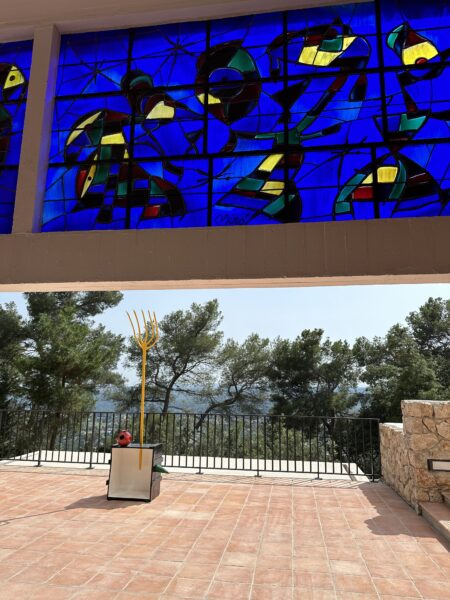
Fondation Maeght
They were driven by a single ambition: to display the avant-garde they promoted under ideal conditions. Because already in 1945 they had inaugurated the Maeght Gallery in Paris, which then showcased the leading lights of the genre, from Calder to Miro via Giacometti (we might incidentally be surprised Picasso was not on this remarkable list).
Under the protection of two artists
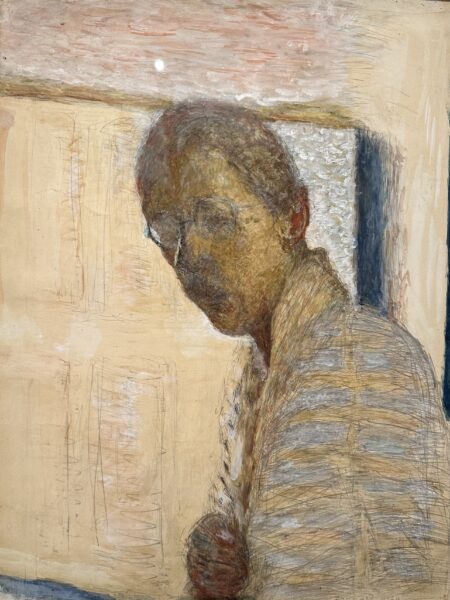
Pierre Bonnard
Ran by Aimé Maeght, who was first trained in engraving, it was placed under the protection of two artists who were also friends themselves, Henri Matisse (1869-1954) and Pierre Bonnard (1867-1947). With the Maeghts, everything is about family. So now the son, Adrien, has taken up the torch for the foundation in collaboration with his daughter Isabelle.
Bonnard and Matisse

Henri Matisse
And to continue their story they have naturally decided for the summer 2024 exhibition to evoke the artists who were godfathers to the family business, Pierre Bonnard (1867-1947) and Henri Matisse (1869-1954). It must be recognized that they both have very different styles. They met at their common gallery in 1909, Bernheim Jeune, and each of them bought works by the other, a sign of mutual admiration.
Vive la peinture
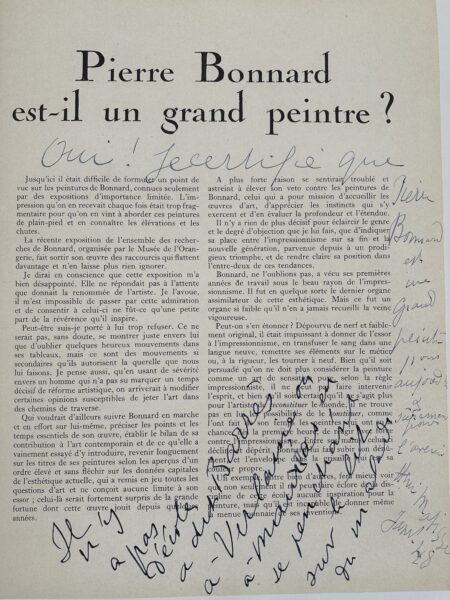
Henri Matisse
The exhibition of 300 artworks and documents is studded with testimonies of friendship, like the postcard on which Matisse simply wrote to his elder “Vive la peinture” (Long Live Painting) or even the photo of Bonnard in 1929 in his studio made by the younger painter where he’s posing in the place of an odalisque, gazing at the clouds.
Nudes by Bonnard
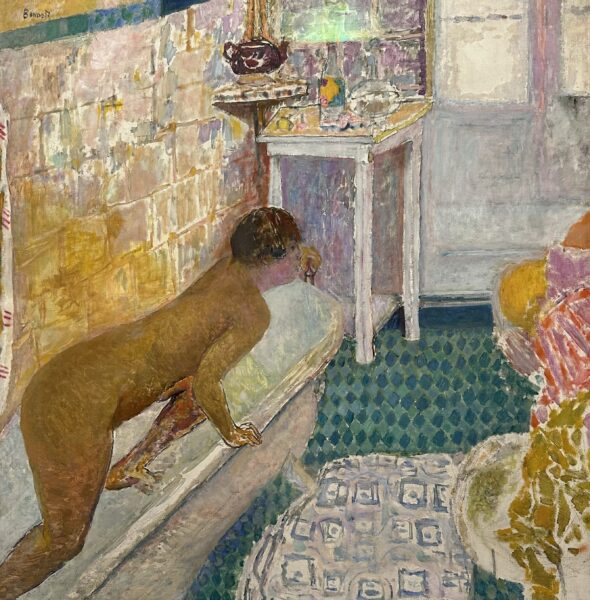
Pierre Bonnard
There are great aesthetic moments, such as the group of female nudes by Bonnard in yellow-orange shades. See in one room the sublime canvas “Sortie de la baignoire” composed of an accumulation of colourful geometric motifs surrounding the young woman.
To appreciate is to support.
To support is to donate.
Support JB Reports by becoming a sustaining Patron with a recurring or a spontaneous donation.
Single line portraits by Matisse
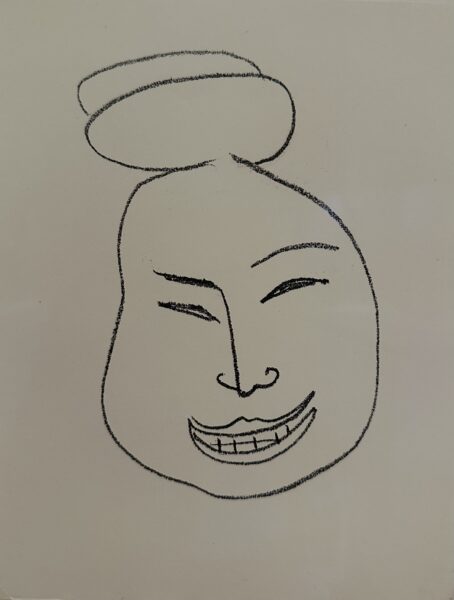
Henri Matisse
Just like the series of late portraits by Matisse, each is made with a single line. The story that unfolds before our eyes is coherent because there is a throughline: the Maeght family. In the catalogue Adrien tells anecdotes about the portraits of his mother Marguerite made by Matisse, also exhibited at the foundation, and the one about “L’amandier en fleurs” from the 1940s, a painting by Bonnard which took pride of place in the young boy’s room.
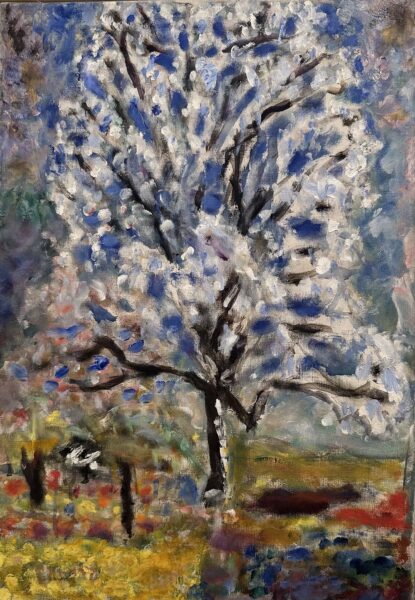
Pierre Bonnard
Plus 500m2
Lastly at the Maeght Foundation, 2024 marks the extension of the exhibition spaces by an extra 500m2 with the construction of a wing hollowed out from the hill, which allows them to receive a selection of major permanent collections as well as live art shows. A harmonious work of architecture designed by Silvio d’Ascia in the spirit of its origins, opening out over the pine forest.
Matisse Museum
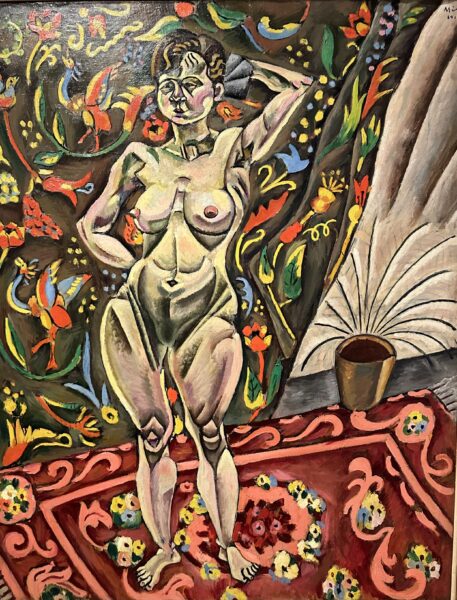
Joan Miro
20km away, the Matisse museum in Nice is coincidentally presenting another dialogue with the master of colour, this time with Joan Miro (1893-1983). They met in 1934 through Pierre Matisse, son of the painter and an art dealer himself. But it must be said: two great artists do not make a great exhibition. “Miro-Matisse, au-delà des images” fails to convince.
Naive landscapes
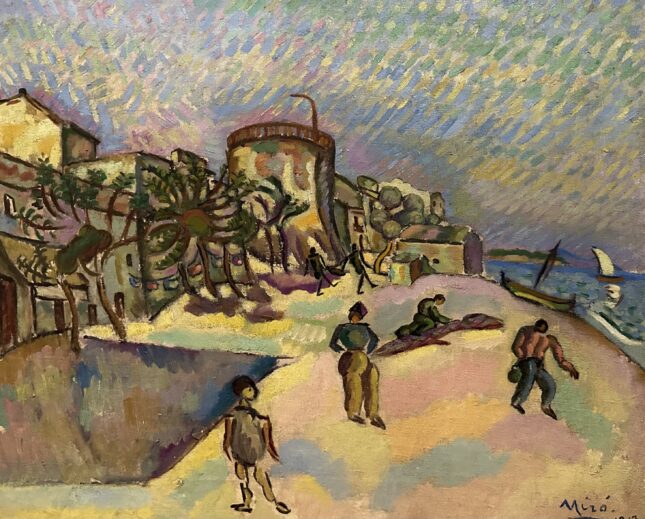
Joan Miro
However, we delight in certain works when taken individually. Before moving into his surrealist abstraction phase in 1923, the Spanish artist produced little known yet fascinating landscapes using a naïve, very detailed and colourful technique, such as his “Plage à Cambrils” from 1917. His “Nu debout” from 1918, which is very angular, resembled the cubist repertoire.
The blues aren’t the same

Joan Miro
In both of them, the blues aren’t the same but they rival each other in beauty. We are reminded of “Vue de Notre Dame” made by Matisse in 1914, which only shows the schematic drawings of the cathedral. In 1925 Miro was diving with delight into a dark blue shade to create “Tête de paysan Catalan”, a sort of sky marked by lines of flight and a few colourful dots which resemble stars. It is placed side by side with the azure of the Parisian view. Two dreams juxtaposed.
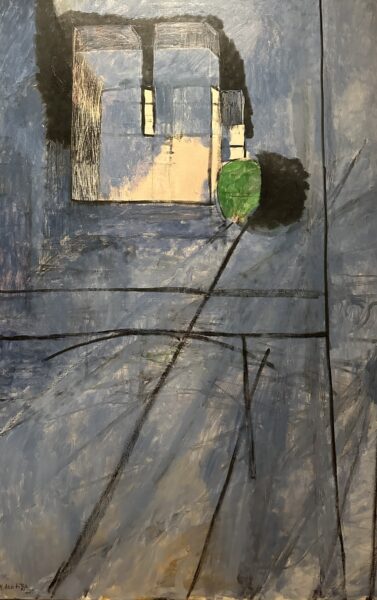
Henri Matisse
Fondation Maeght: Until 6 October. https://www.fondation-maeght.com/?lang=fr
Musée Matisse:
Until 28 September. www.musee-matisse-nice.org/fr/exposition/miromatisse-par-dela-les-images/
Support independent news on art.
Your contribution : Make a monthly commitment to support JB Reports or a one off contribution as and when you feel like it. Choose the option that suits you best.
Need to cancel a recurring donation? Please go here.
The donation is considered to be a subscription for a fee set by the donor and for a duration also set by the donor.



